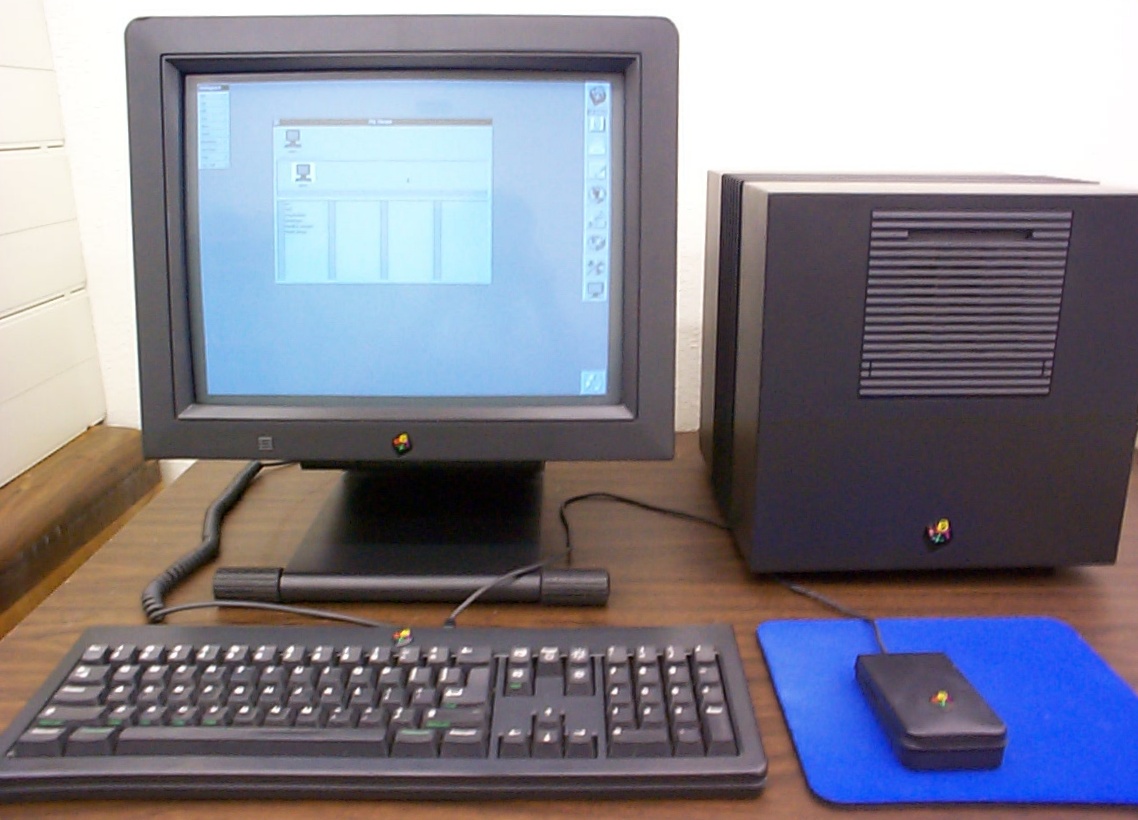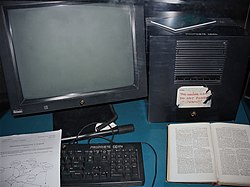Why did Google enlist Sebastian Thrun? Ray Kurzweil? They are trying to buy an ounce of Steve Jobs Magic. Vision is valuable. Google got stuck with a car that drives itself, but is well stocked in vision. And that's priceless. And with Sergey (we were classmates at Stanford in the PhD CS program at the same time he got google I got worked to death and made a lot of promises. The joys of being a woman) at the helm things are starting to make more sense rather than "gee were playin with billions cause we can"
Dokko.co just patented three things related to google glasses internet enhanced reality. It's the new big thing. It's coming. Sooner than you think. But my feeling is... if you can't think up a .com name for your company you suck.
Hey Google, I read Ray's Kurzweil's book on neural networks and genetic programming - all 20 year old stuff (great synthesizer design notwithstanding I own four of his keyboards and a maxed out k2000rs). Feel free to hire me to lead your augmented reality neural-cybernetics division. Trust me it will be way cool.
------
In the year of Steve’s passing, I want to talk about the conversion of the nerd. I was there. I programmed both the Apple II and the CompuColor. I decked them side by side in their battle. I know what happened.
Steve Jobs was not an intellectual or a geek or a nerd. Steve was a hippie turned messiah. He was technical and knew about circuits and programming but he was never a master of them. He loved circuits and the power they provided and the digital revolution. Jobs and Woz met in high school and later When Steve Wozniak would visit home from Michigan Jobs was always there to learn. “We both loved electronics and the way we used to hook up digital chips,” Wozniak said. “Very few people, especially back then had any idea what chips were, how they worked and what they could do. I had designed many computers so I was way ahead of him in electronics and computer design, but we still had common interests. We both had pretty much sort of an independent attitude about things in the world. …”
After high school, Jobs enrolled at Reed College in Portland, Oregon. Lacking direction, he dropped out of college after six months. In 1974, Jobs took a position as a video game designer with Atari. Several months later he left Atari to find spiritual enlightenment in India, traveling the continent and experimenting with psychedelic drugs. In 1976, when Jobs was just 21, he and Wozniak started Apple Computers. The duo started in the Jobs family garage, and funded their entrepreneurial venture after Jobs sold his Volkswagen bus and Wozniak sold his beloved scientific calculator. They had $1,350, enough for parts and ramen noodles and not much else (were there ramen noodles back then?)
Their first computer – the Apple I – was a colossal failure. It barely sold. They had poured their lifeblood their sweat and all their time and finances into it. And it failed. It was ignored. It was nothing. Compare this to Larry Ellison who took IBMs SQL language, built a database around it, and it sold sold SOLD SOLD. Endless steady growth. But for Jobs it was different, because it started with failure.
The single most important question in the history of silicon valley is what happened between Apple I and Apple II. And more importantly why did they keep going. Well when you work in a garage and your food is ramen noodles and you have no salaries, the few sales they did manage were able to fund continued development. And with it they added the one key ingredient that was missing – Color. The Apple II was the worlds second color computer for hobbyists. But at the same time, there was the CompuColor. And the Compucolor came first. And it was better. In fact, if you messed with it with bad code it could literally fry the circuits of the custom Intel monitor that struggled to keep up with its high resolution graphics. The square blocks of the Apple II was a dinosaur by comparison. So how did the lesser machine win the fight?
I literally sat in a room with an Apple II and a CompuColor II duking it out for nerd mind share in the local high school. The CompuColor was the better machine. It was the one nerds fought for time for when the AppleII sat unused. It has the coolest keyboard this side of Mythros and probably EVER in computer legend. It has better games and much better graphics. It was more interesting to program. The Apple II had more games. Most of which were programmed in Basic. And the code was Hideous. Direct PEEK and POKE statements into video ram one after another by the hundreds. If you wanted the bouncing ball to change from green to flashing purple you updated the hex code. The older students hated the dweebier and dumber AppleII users so we would always hack the games and switch out sections of PEEK and POKE code. Suddenly Mario had only one leg to hop on, and his dinosaur now looked like a frisbee. The non programmer would come in to play a game and go “What the HELL!” We would feign oblivion and hack away over and over on the real computer – the CompuColor – the joy of 11th grade hakerdom. A real machine for real engineers. After all this one might ask not why did Jobs succeed but why did the Compucolor with all that going for it, lose? As I’m about to show you, an important first lesson of success is that to win, you simply have to show up and be in the game. The second lesson is to do things right.
The King of Color – the CompuColor II

The young upstart, the Apple II

“In the end it was the government cracking down on them for FCC radio controls, and Microsoft cracking down on them for royalties that slew Compucolor. They had gotten better faster by taking shortcuts. But they were screwing the developers by charging them for disks. Without disks in hand developers didn’t feel like writing software for it. Once a monitor fried out, the high schools had no funds to replace them and the CompuColor went to the trash, replaced by the more reliable Apple IIe. Jobs and Wozniak had done it all themselves out of love. And that drive and care about the design made sure it was done right without shortcuts even if they got less far. Were there problems? Of course. But five years later the CompuColor would be gone, and the Macintosh would be released catapulting Apple to the Fortune 500. And the greedy MBAs would think they no longer needed Jobs and cast him out. While the fuel of his passion sustained Apple within five years it would falter. Jobs would go on to invent much of the core of object oriented programming and operating systems while at Next when dopey computer science professors were stuck in their academic world of Pascal. From Next he birthed Pixar. But the real birth was the widespread use of Objective C, Object oriented programming, C++, and finally Java and C#.
Apparently, you could not format the 5.25″ disks yourself, surely because Intecolor wanted to make money by selling these preformated disks… But many users ended up by writing their own formating programs.
The system was very vulnerable to certain hardware tinkering. Tampering with the addresses that accessed the hardware registers could wipe out all the RAM (it did something fatal to the refresh logic). It used an Intel CRT controller for screen processing. Altering the number of scanlines to too high a value could kill the CRT.
The ROM contained a ripped-off version of Microsoft BASIC and a simplistic file system. Microsoft found out about them, and forced ISC to become a Microsoft distributor. They also collected royalties on all machines sold up to that time.
The disk drive was originally designed to use an 8-track tape cartridge for storage (yes, you read that right!). When that proved to unreliable, they switched to a 5.25 inch disk drive. They didn’t change the file system, which still thought it was a tape drive. When you deleted a file, it re-packed all remaining files back to the front of the disk. Used the 8K of screen RAM for a buffer to do it, which led to some psychedelic I/O. ” – OldComputers.com
Objective-C was created by Brad Cox and Tom Love in the early 1980s. Cox was intrigued by problems of true re-usability in software design and programming. One of the first object oriented languages was Smalltalk but it wasn’t backwards compatible with all the C programming out there it was really its own world. Cox wrote a pre-processor for C to add some of the capabilities of Smalltalk which he called “OOPC” for Object-Oriented Pre-Compiler. Cox showed that making interchangeable software components really needed only a few practical changes to existing tools – They needed to support objects in a flexible manner and allow for the code to be bundled into a single cross-platform format. Jobs picked up on this and selected Objective-C from StepStone but then he did it one better. He extended the GCC compiler to support Objective-C and developed the AppKit and Foundation Kit libraries to make development faster and more powerful.
The Next Computer – What Steve Jobs Thought Computers Should Look Like

The Sun Sparkstation i (4/60) affectionately referred to by programmers as “the pizza box”

In an odd way, the real revolution that Jobs inspired would be unknown to the Apple people because it wasn’t the hardware but the programming language of the computer that Jobs had the biggest impact in. While Dr. Stroustrup would have Given us C++ anyways, without a Next Computer and it’s brilliant hardware – that optical disk that could fit all of Shakespeare! – that was enough geek gadget gleam to get all the nerds excited to move into object oriented programming. Twice he got the nerds to shift their seats and turn to the machine he designed. The first time it was by surviving long enough to watch the top dog fail, but the second time he did it by offering us sexy. It cost $6,500 when released in 1990 about $20,000 in today’s money! Far beyond what nerds could afford.
Apple had released the LISA computer in 1983 (Steve Jobs was kicked off the project in 1982 so he is only partially to blame) for a staggering $10,000 entry price. It didn’t sell. I recall walking into a computer store which were then everywhere and drooling over the massive 2 megabytes of RAM. How could anyone ever write a program that could use so much memory. The LISA was a dream computer out of the reach of everyone. Yet in just a few years Here was Jobs again releasing a computer for nearly the same price. What could he possibly have been thinking. It was a price which meant only universities could afford them. What ended up happening is that every computer science department in the country wanted one and all the students walked by and drooled. What on earth was this thing. At the time when Sun was dishing out the pizza box – stale crust to be sure – and DEC had us stringing input parameters, Jobs had us in revolution. Eventually the Next physical platform would fade and the software would continue on.
The LISA, a failed first go…

Today all core apple software and the programming for the iPhone is in ObjectiveC which goes back to Next. What then I ask was Jobs real legacy? It was never about the hardware.
Finally, a young man at CERN named Tim Berners-Lee sat down at this computer in 1991 to create the first web browser and web server and with it… the internet you are reading this article on today. Do you recognize it?

The Job’s story is not one of being the smartest or making the best product. It was all about perseverance and love of what they were doing. And that translated into doing things right. And caring about the product. By the time the Apple IIe was out, it was a solid stable platform and the developers jumped on. Once the developers were out there, he switched roles. He no longer soldered and built the machines. Instead he inspired the next generation to see them with the same awe and glory that he did. He was the messiah of the digital age.
No comments:
Post a Comment